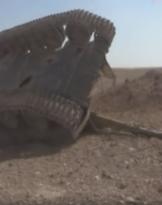The summit between US President Trump and Mexican Peña Nieto will take place. The connections between the two countries are too narrow and the issues on the table are too important to leave room for questions of principle.
As it was legitimate to imagine, the frictions created around the wall between the USA and Mexico have triggered the prejudices of the international press, altering the extent of information. In reality it is only one stage in the complex knot of relations between the two countries which often sees the immigration issue and illicit cross-border trafficking as focal points.
Washington's intention to "build" the wall on the border with Mexico has generated indignant reactions around the world, but it is good to clarify some aspects.
First of all it must be said that the wall already exists and was built during the Clinton administration. The so-called "Tijuana Wall" is an almost 30 km long steel plate that divides the US and Mexico between San Diego and Tijuana at the busiest point of the entire border. Added to this are the fixed and mobile barriers scattered along 1000 of the 3000 km of border existing between the two countries, always set up in the time of Bill Clinton. Before getting alarmed by the new decrees signed by Trump, it would therefore be good to reflect: for the Americans, the southern border has been a very serious business for decades; in recent times it has only become a priority.
To confirm this, in 2005, in full Bush era, the extension of the existing barrier was approved by Congress with further authorization voted in 2006. The majority was overwhelming in both cases, with the transversal support of many Democrats ( including Hillary Clinton and then Illinois Senator Barack Obama). Obviously the international press, already deployed for four years of crossfire on Trump, is flying over.
In other words, despite the doubts about the actual effectiveness, the construction of a wall on the border between the USA and Mexico and more generally the strengthening of the infrastructures and border surveillance personnel, is an ancient project, shared by the majority of American citizens. , especially those living in the four border states: California, Arizona, New Mexico and Texas. Even if the Republican electorate is more inclined to the hard line than the democratic one, there are no ideological poles rooted in this sense, because the issue is experienced as a real national emergency.
The numbers speak for themselves: every year about half a million Mexicans enter the States illegally. To these are added the tens of thousands of others Latinos who use Mexico as a base to take the plunge. To date, the line that divides Mexico from the US remains by far the most "crossed" border on the planet.
To protect American borders, the 50.000 federal customs officers of the CBP, Costum Border Protection. Although more than a third of the staff is deployed around the 42 existing crossings with Mexico, the situation is now out of control: except for the most representative crossing points such as Tijuana-San Diego in California and Ciudad Juarez-El Paso in Texas, most part of the border is an authentic sieve. 
The insufficiency of the infrastructures has so far been buffered in some way by the Americans with the cynical help of nature: the desert areas immediately above the border have often acted as dissuasive or worse still as a selector for illegal immigration. There are hundreds of illegal immigrants who die every year even after managing to "climb over the wall".
Illegal immigrants in the US today are around 12 million, half of them Mexican. The attitude towards them has been at the center of the electoral debate of the recent presidential elections and undoubtedly one of Donald Trump's flagships.
Today in the US decades of uncertain and rebounding policies are paid between local and federal authorities, which have ended up festering the problem. The double measure used by the Obama administration that on the one hand spoke of amnesties, on the other continued expulsions to stem the collapse of consensus, gave the coup de grace. All it takes is a fact to get an idea: in the 2013 (with Obama president) 400.000 were the arrests made by the American authorities concerning illegal immigration crimes. Almost one per minute!
One of the most heated points of debate is the difference between illegal entry and illegal status. If the former is a federal offense, being caught without the papers in order would theoretically not constitute a very serious offense.
Behind these nuances of law, the problem of work and insecurity has meanwhile grown to a greater extent precisely in the areas of high immigration in the States, fueling social discontent.
The immigration phenomenon is a delicate subject in the West, often treated with demagogy and commonplaces under the banner of politically correct.
It could be useful, for example, to stop considering Mexico as the homeland of suns farmers e braceros defenseless who try to tap into the North American slave-trade.
Today's Mexico, in terms of organized crime linked to drug trafficking, is equivalent to what Colombia has been in the 80 years. Only in the 2011 were 13000 victims of drug marketing. The often cited Ciudad Juarez has reached the sad record of cities with the highest rate of homicides in the world, reaching the absolute record of 9 killings per day. There is an effective security and legality problem, it is difficult to deny it.
 The Mexican drug cartels did not bypass Colombia only in distribution, but they also began to excel in production, especially since the market was flooded with synthetic drugs (the famous TV series Breaking Bad. is centered on the subject, very much felt in the states of the south west). The trafficking of weapons and human beings generated as a result of the drug war, makes the border area a veritable powder keg. Thinking of getting by with the usual good-sense intuitions, leave the time you find.
The Mexican drug cartels did not bypass Colombia only in distribution, but they also began to excel in production, especially since the market was flooded with synthetic drugs (the famous TV series Breaking Bad. is centered on the subject, very much felt in the states of the south west). The trafficking of weapons and human beings generated as a result of the drug war, makes the border area a veritable powder keg. Thinking of getting by with the usual good-sense intuitions, leave the time you find.
A lot of false news has also circulated on the issue of bilateral relations. Despite the disappointment of the Mexican President for the tones used by Trump, relations between the USA and Mexico are excellent and above all necessary. United by NAFTA (North American Free Trade Agreement) the two countries are mutually indispensable trading partners: the USA is the first destination for Mexican exports (291 billion a year, OEC data); Mexico, on the other hand, is the second destination for American products (194 billion a year, OEC data).
Mexican President Peña Nieto is aware of this and also knows that raising one's voice is not convenient for anyone, especially him. As an exponent of the Institutional Revolutionary Party, in power in Mexico uninterruptedly from the 1929 to the 2000 and then again from the 2012, is at the center of fierce polemics for corruption and lack of effectiveness in the fight against drug cartels.
To say that today's Mexico is a narco, it is probably an exaggeration; to maintain that it is a politically, socially and economically failed country is very plausible.
Today's problems are the legacy accumulated over decades of approximation that has postponed any solution to posterity. Without tears or political figures willing to put their face on it, it will be difficult to find a balance acceptable to all.
After all, the cross-border frictions between Mexico and the United States are the synthesis of the inequalities between the rich world and developing countries that affect the entire planet. It certainly isn't a physical barrier to solving the problem. Even less so is the Third World and globalist moralism which bends reality to pre-packaged judgments.
(photo: USCBP)












